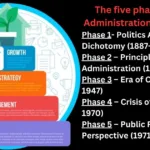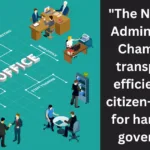Public Private Partnership (PPP) is a collaborative approach to infrastructure development that involves the joint efforts of the public and private sectors. In recent years, PPP has gained traction as a viable model for driving economic growth and achieving sustainable development in the United States.
Through PPP, the government and private entities combine their resources, expertise, and funding capabilities to implement critical infrastructure projects. This partnership enables the efficient utilization of public funds and unlocks investment opportunities for the private sector, resulting in improved infrastructure services and enhanced economic performance.
PPP has emerged as a powerful catalyst for economic growth, as it allows governments to leverage the expertise and financial resources of the private sector. By attracting private investment, PPP projects stimulate job creation, facilitate the development of revenue-generating assets, and lay the foundation for long-term sustainable development.
Moreover, PPP promotes efficient project financing by sharing risks between the public and private sectors. This risk-sharing mechanism ensures that the financial burden is distributed evenly, minimizing the strain on public budgets and maximizing returns for private investors.
In this article, we will delve into the various aspects of PPP and explore its benefits for sustainable infrastructure growth and economic development in the US. We will also examine real-life examples of successful PPP projects, discuss the challenges and risks associated with PPP, and outline key considerations for successful implementation.
Key Takeaways:
- Public Private Partnerships (PPP) involve collaboration between the public and private sectors for infrastructure development.
- PPP models unlock investment opportunities and promote economic growth.
- PPP enables efficient project financing and risk-sharing.
- Successful PPP implementation requires strong governance and effective project management.
- PPP plays a crucial role in achieving sustainable development and enhancing economic performance.
Understanding Public Private Partnership

Public Private Partnership (PPP) is a collaborative model that involves the participation of both the public and private sectors in delivering public services and promoting economic development. In this model, the public sector, represented by government entities, works in partnership with private companies to finance, develop, and manage infrastructure projects.
PPP can be defined as a contractual arrangement where the public and private sectors come together to leverage their respective resources, expertise, and capabilities to deliver projects that benefit the community. This collaboration model allows for the sharing of risks, responsibilities, and rewards between the two sectors, creating a mutual incentive for successful project delivery.
The public sector plays a crucial role in PPP, providing oversight, regulatory frameworks, and public funding to support project development. The involvement of the public sector ensures that the projects align with the government’s policies, priorities, and objectives, ultimately benefiting the public and contributing to national development.
The private sector’s participation in PPP brings in additional resources, technical expertise, and innovative approaches to project implementation. By investing their capital, knowledge, and technology, private companies contribute to the efficient and timely delivery of infrastructure projects, driving economic growth and job creation.
Collaboration between the public and private sectors in PPP projects can take various forms, including joint ventures, concessions, build-operate-transfer (BOT) arrangements, and service contracts. These collaboration models allow for flexibility and customization based on the unique needs and requirements of specific projects.
Public Private Partnership is a collaborative model that leverages the strengths of both the public and private sectors to deliver infrastructure projects that benefit the public and contribute to economic development.
Benefits of Public Sector Involvement in PPP
The involvement of the public sector in PPP projects brings several benefits. Firstly, it ensures that projects align with the government’s vision, policies, and development objectives. Public sector involvement also provides regulatory oversight to safeguard public interest, ensuring that projects meet sustainability, safety, and quality standards.
Furthermore, by participating in PPP projects, the public sector can access additional resources and expertise from the private sector, enhancing the efficiency and effectiveness of project delivery. This collaboration leads to improved service delivery, cost savings, and better value for public investment.
Benefits of Private Sector Participation in PPP
Private sector participation in PPP projects offers numerous advantages. It allows companies to access new market opportunities and revenue streams, contributing to business growth and expansion. Through PPP, private companies can leverage their capital, technology, and expertise to develop revenue-generating assets, such as toll roads, airports, and water treatment plants.
Participating in PPP projects also enables private companies to showcase their innovation and contribute to the development of sustainable and resilient infrastructure. By leveraging their technical expertise, private entities can introduce new technologies and implement efficient project management practices, resulting in improved project outcomes and long-term benefits for stakeholders.
Key Characteristics of PPP
| Characteristic | Description |
|---|---|
| Collaborative Model | PPP involves collaboration between the public and private sectors. |
| Risk Sharing | Risks and rewards are shared between the public and private sectors. |
| Resource Leveraging | Both sectors leverage their resources, expertise, and capabilities. |
| Efficient Project Delivery | PPP promotes efficient project management and timely delivery. |
| Improved Service Quality | Private sector involvement enhances service quality and performance. |
PPP Examples and Models

Public-Private Partnerships (PPPs) have been instrumental in various sectors in India. Here are some examples and models:
- Road Infrastructure Development:
- Model: Build-Operate-Transfer (BOT)
- Example: The Mumbai-Pune Expressway was developed through a PPP model where private companies were responsible for the design, construction, and maintenance of the expressway for a specified concession period. Toll collection during the concession period served as a revenue stream for the private partner.
2. Urban Infrastructure Projects:
- Model: Design-Build-Finance-Operate-Transfer (DBFOT)
- Example: The Delhi Metro Rail Corporation (DMRC) is a notable example of PPP in urban infrastructure. Private companies were involved in designing, constructing, financing, and operating different phases of the Delhi Metro network. Revenue generated from fares and commercial activities within metro stations contribute to the returns for the private partners.
3. Power Generation Projects:
- Model: Build-Own-Operate (BOO)
- Example: Mundra Ultra Mega Power Plant in Gujarat is an example of a PPP in power generation. Private companies built, owned, and operated the power plant under a long-term power purchase agreement with state utilities or distribution companies. The revenue generated from the sale of electricity is the primary revenue stream for the private partner.
4. Healthcare Facilities:
- Model: Operation and Maintenance Contracts
- Example: Public hospitals in various states have entered into PPP arrangements for the operation and maintenance of healthcare facilities. Private entities manage day-to-day operations, maintenance, and sometimes even clinical services in exchange for a fee from the government. This model aims to improve efficiency and service delivery in public healthcare.
5. Education Infrastructure:
- Model: Build-Own-Operate-Transfer (BOOT)
- Example: Many states in India have adopted PPP models for the construction and operation of educational infrastructure such as schools and colleges. Private partners build educational institutions, operate them for a specified period, and then transfer ownership back to the government. The revenue can come from tuition fees, government grants, or other sources.
These examples illustrate the diverse applications of PPP models in India across sectors such as infrastructure, energy, healthcare, and education, contributing to economic development and improved service delivery.
Public Private Partnerships (PPP) have been successfully implemented in various infrastructure projects across the United States. These examples showcase the diverse models and structures used to develop PPP projects, including joint ventures and specific PPP models tailored to address the unique needs of different sectors. These successful partnerships have played a crucial role in the development of essential infrastructure, contributing to the overall growth and advancement of the nation.
6. Transportation PPP: I-595 Express Corridor Improvements
The I-595 Express Corridor Improvements project in Florida is an excellent example of a successful transportation PPP. Led by the Florida Department of Transportation (FDOT) and ACS Infrastructure Development, this project aimed to enhance the capacity, reliability, and safety of a vital transportation artery. Through a PPP model structured as a design-build-finance-operate-maintain (DBFOM) agreement, the project successfully delivered improvements to the I-595 corridor, including additional lanes, new ramps, and upgraded interchanges. This partnership between the public and private sectors ensured the timely delivery of critical infrastructure while minimizing the impact on taxpayers.
7. Education PPP: Success Academy Charter Schools
The Success Academy Charter Schools in New York City demonstrate how PPP can address the infrastructure needs of the education sector. In partnership with the New York City Department of Education, Success Academy operates a network of high-performing charter schools serving thousands of students. By leveraging private sector expertise and resources, this collaboration has enabled the establishment of state-of-the-art facilities, innovative educational programs, and improved student outcomes. The Success Academy partnership showcases the potential of PPP in transforming education infrastructure and advancing educational opportunities for underserved communities.
8. Energy PPP: Cape Wind Offshore Wind Farm
The Cape Wind Offshore Wind Farm project in Massachusetts exemplifies PPP in the renewable energy sector. This joint venture between Energy Management Inc. and the Massachusetts Clean Energy Center aimed to harness the power of wind energy to generate clean, sustainable electricity. Through extensive collaboration with government agencies, private investors, and local communities, the project overcame challenges to successfully develop the first offshore wind farm in the United States. The Cape Wind Offshore Wind Farm not only contributed to clean energy production but also stimulated economic growth through job creation and investments in the local economy.
9. Healthcare PPP: Cleveland Clinic Abu Dhabi
The Cleveland Clinic Abu Dhabi is a prime example of a successful international PPP venture in the healthcare sector. Established through a partnership between the Cleveland Clinic, Mubadala Investment Company, and the Abu Dhabi Government, this world-class healthcare facility provides advanced medical services in the Middle East region. The PPP model utilized in this collaboration combined private sector healthcare expertise with public sector support to deliver high-quality patient care, research, and education. The Cleveland Clinic Abu Dhabi serves as a model for healthcare PPPs, demonstrating the potential to enhance healthcare infrastructure and services globally.
| PPP Example | Sector | Partners | PPP Model |
|---|---|---|---|
| I-595 Express Corridor Improvements | Transportation | Florida Department of Transportation (FDOT), ACS Infrastructure Development | Design-Build-Finance-Operate-Maintain (DBFOM) |
| Success Academy Charter Schools | Education | New York City Department of Education, Success Academy Charter Schools | N/A |
| Cape Wind Offshore Wind Farm | Energy | Energy Management Inc., Massachusetts Clean Energy Center | Joint Venture |
| Cleveland Clinic Abu Dhabi | Healthcare | Cleveland Clinic, Mubadala Investment Company, Abu Dhabi Government | N/A |
The Role of PPP in Economic Development

Public Private Partnership (PPP) plays a significant role in driving economic development and fostering sustainable growth. By leveraging the expertise and resources of both the public and private sectors, PPP initiatives have the potential to fuel infrastructure development, attract private investment, create jobs, and enhance overall economic performance.
Infrastructure development is a key driver of economic growth. By investing in critical sectors such as transportation, energy, and telecommunications, PPP projects improve connectivity, promote trade, and facilitate the movement of goods and services. This, in turn, stimulates economic activity, enhances productivity, and opens up new market opportunities.
Private sector involvement is crucial in PPP projects as it brings innovative ideas, efficiency, and financial resources to the table. Through PPP, the private sector can contribute to the development and maintenance of infrastructure assets, reducing the burden on the government and freeing up public funds for other pressing needs.
Attracting Private Investment
PPP projects attract private investment by providing long-term revenue streams and offering opportunities for returns on investment. The involvement of the private sector ensures that infrastructure projects are financially viable, reducing the strain on public finances and paving the way for sustainable growth.
Moreover, PPP projects are often structured in a way that allows the private sector to share in the risks and rewards. This risk-sharing mechanism provides incentives for the private sector to deliver projects efficiently and maintain the highest quality standards, resulting in better infrastructure outcomes.
Creating Jobs and Economic Opportunities
Infrastructure development through PPP creates employment opportunities and generates economic activity. The construction phase of PPP projects, in particular, provides jobs for local communities and stimulates industries such as manufacturing and engineering.
Furthermore, improved infrastructure enhances the competitiveness of regions and attracts businesses, leading to increased economic activity and job creation. It creates an enabling environment for entrepreneurship, innovation, and the growth of small and medium-sized enterprises, contributing to sustainable economic development.
“Public Private Partnership (PPP) plays a significant role in driving economic development and fostering sustainable growth.”
Overall, the role of PPP in economic development is crucial. By harnessing the strengths of both public and private sectors, PPP enables the efficient delivery of infrastructure projects, stimulates economic growth, and lays the foundation for sustainable development.
Advantages of PPP for Government and Private Sector
Public Private Partnership (PPP) offers numerous benefits for both the government and the private sector. By leveraging private sector funding and expertise, PPP enables governments to undertake infrastructure projects that may otherwise be challenging to finance and manage. At the same time, private entities can access project finance and develop revenue-generating assets through PPP arrangements. This collaboration creates a win-win situation, fostering economic growth and delivering efficient public services.
Benefits for the Government
- Access to Private Sector Funding: Through PPP, the government can tap into private sector capital, reducing the burden on public budgets and allowing for the implementation of large-scale projects that may have been otherwise impractical.
- Enhanced Project Efficiency: Private sector participation brings efficiency and innovation to project management, leading to cost savings and timely completion of infrastructure projects.
- Transfer of Risk: PPP arrangements enable the government to share project risks with private partners, mitigating potential financial and operational liabilities.
- Access to Expertise: Collaboration with private sector firms provides the government access to specialized knowledge, technical expertise, and industry best practices.
- Innovative Financing Models: PPP allows the government to explore diverse financial models, such as build-operate-transfer (BOT) and build-own-operate-transfer (BOOT), which can help optimize the allocation of resources and reduce the financial burden on the public sector.
Benefits for the Private Sector
- Opportunities for Revenue Generation: PPP projects offer the private sector the chance to develop and operate revenue-generating assets, creating long-term income streams.
- Access to Project Finance: By participating in PPP initiatives, private entities gain access to project finance from banks, financial institutions, and capital markets, facilitating project implementation.
- Long-Term Partnerships: PPPs often involve long-term contracts, providing stability and a conducive environment for private sector investment and business growth.
- Exposure to New Markets: Involvement in PPP projects allows private companies to enter new sectors and expand their market presence while contributing to the development of critical infrastructure.
- Shared Risk and Rewards: Private sector participation in PPP projects offers the opportunity to share risks and rewards with the government, leading to a more balanced distribution of project outcomes.
Overall, PPP brings together the strengths of the public and private sectors, enabling efficient project delivery, fostering economic growth, and meeting the needs of society. By capitalizing on the advantages offered by PPP, governments and private entities can forge successful partnerships that drive sustainable development and benefit the nation as a whole.
Project Financing in PPP
In the realm of Public Private Partnership (PPP), project financing plays a crucial role in driving infrastructure development and fostering private sector participation. By exploring different sources of funding and mechanisms, PPP projects can secure the necessary financial resources while leveraging the expertise and resources of the private sector.
The Sources of Funding in PPP
PPP projects rely on a combination of public and private funds to finance infrastructure development. The private sector can contribute through equity investments, debt financing, or a combination of both. On the other hand, the public sector provides financial support through government grants, subsidies, or loans.
Private sector investors often seek to achieve returns on their investments and therefore play an active role in project financing. They assess the risk and reward potential of each project, determining the amount of equity and debt to invest. The public sector, on the other hand, aims to ensure that the project aligns with their policy objectives and delivers public value.
Private Sector Participation in Financing
The private sector’s involvement in project financing encompasses various roles. They may act as investors, lenders, or both, depending on the nature of the PPP project. Private investors provide equity capital to fund the project, contributing to its overall project financing. In return, they expect a share of the project’s profits or other financial benefits.
Additionally, the private sector also plays a vital role as lenders in PPP projects. They provide loans or access to capital markets to finance the project’s construction and operation phases. Lenders assess the project’s financial viability and creditworthiness, considering factors such as revenue generation potential, risk factors, and the ability to repay debt.
Benefits of Private Sector Financing in PPP
The involvement of the private sector in PPP project financing offers several advantages. Firstly, it allows governments to access additional funding sources beyond the limitations of public budgets. This expands the pool of available capital, enabling the implementation of more ambitious and economically viable infrastructure projects.
Moreover, private sector financing brings efficiency to the project. Private investors conduct rigorous financial evaluations before committing funds, ensuring that the project is financially viable in the long run. This financial discipline can lead to cost savings, improved project outcomes, and enhanced risk management.
Additionally, private sector participation in project financing can bring innovation and specialized expertise to the table. Private investors often possess in-depth knowledge and experience in project finance, allowing them to structure the financing in a way that maximizes returns and minimizes risks. This infusion of expertise contributes to the successful implementation and operation of infrastructure projects.
Overall, project financing in PPP allows for a symbiotic relationship between the public and private sectors, harnessing the strengths of each to drive infrastructure development and deliver sustainable growth.
Challenges and Risks in PPP

Implementing public private partnerships (PPP) comes with its fair share of challenges and risks. It is essential to address these obstacles to ensure the successful establishment of partnerships and the efficient collaboration between the public and private sectors in driving infrastructure development. Some of the key challenges and risks in PPP include:
- Limited private sector involvement: One of the challenges in PPP is the limited participation of the private sector. Despite the potential benefits, some companies may be cautious about engaging in PPP projects due to concerns about profitability, project complexity, or regulatory restrictions.
- Difficulties in government collaboration: Effective collaboration between the government and the private sector is crucial for the success of PPP initiatives. However, differing priorities, bureaucratic processes, and conflicting interests can pose challenges in establishing a conducive environment for collaboration.
- Managing diverse stakeholders: PPP projects involve multiple stakeholders, including government agencies, private investors, local communities, and non-governmental organizations. The diverse interests and expectations of these stakeholders can lead to conflicts and delays in decision-making processes.
- Risk allocation and management: Proper risk allocation and management is essential in PPP projects. However, determining and assigning risks among the involved parties can be a complex task. Failure to adequately address risks can lead to cost overruns, delays, and disputes.
- Political and regulatory uncertainties: Changes in political leadership, shifting regulatory frameworks, and legal uncertainties can impact the stability and viability of PPP projects. These uncertainties may affect investor confidence and increase project risks.
Despite these challenges and risks, overcoming them is crucial in realizing the benefits of PPP. The collaboration between the public and private sectors can lead to innovative solutions, efficient resource allocation, and accelerated infrastructure development.
“Successful PPP projects require strong governance, transparent decision-making processes, and effective risk management strategies. Governments and private entities must work hand in hand to address challenges and mitigate risks in order to achieve mutually beneficial outcomes.”
| Challenges | Risks |
|---|---|
| Limited private sector involvement | Increased project complexity |
| Difficulties in government collaboration | Diverging priorities |
| Managing diverse stakeholders | Conflicting interests |
| Risk allocation and management | Lack of risk mitigation strategies |
| Political and regulatory uncertainties | Changes in legislation |
PPP and Sustainable Infrastructure
Public Private Partnership (PPP) plays a crucial role in driving sustainable infrastructure development, contributing to both economic growth and environmental sustainability. By leveraging the expertise and resources of the private sector, PPP enables the adoption of innovative technologies and improves project efficiency, leading to long-term benefits for all stakeholders.
Benefits of PPP in Achieving Sustainable Growth
PPP projects promote economic growth by addressing the infrastructure gap and creating opportunities for private sector involvement. The collaboration between the public and private sectors allows for the development of high-quality infrastructure that meets the needs of the communities, fostering economic activities and attracting investments.
Moreover, PPP initiatives contribute to sustainable growth by integrating environmentally-friendly practices. These partnerships prioritize the use of sustainable materials and technologies, reducing carbon footprints and minimizing environmental impact. By embracing sustainable practices, PPP projects align with global efforts to combat climate change and preserve natural resources.
Enhancing Efficiency and Effectiveness
One of the key advantages of PPP in sustainable infrastructure development is its ability to enhance project efficiency. The private sector’s experience and expertise in delivering projects within budget and on schedule ensure timely completion and cost-effective implementation.
PPP models also promote innovation in infrastructure development. Private sector involvement encourages the adoption of cutting-edge technologies and best practices, improving the quality and functionality of infrastructure assets. This drive for innovation leads to the creation of smart, resilient, and sustainable infrastructure systems that can withstand future challenges.
The Case for Private Sector Involvement
Private sector involvement in infrastructure development through PPP brings numerous benefits. By sharing the financial risks and responsibilities with the public sector, private entities can leverage their expertise and capital to drive sustainable infrastructure projects.
The private sector’s involvement also stimulates economic growth through job creation and increased productivity. With PPP projects, there is a boost in employment opportunities, contributing to local economies and fostering socio-economic development.
| Benefits of PPP in Sustainable Infrastructure Development |
|---|
| Promotes economic growth |
| Attracts private sector involvement and investment |
| Integrates environmentally-friendly practices and technologies |
| Enhances project efficiency and effectiveness |
| Drives innovation in infrastructure development |
| Creates job opportunities and stimulates local economies |
Overall, PPP serves as a catalyst for sustainable infrastructure development, driving economic growth while ensuring environmental responsibility. By fostering collaboration between the public and private sectors, PPP projects can create a lasting impact, benefiting both the present and future generations.
Public Private Partnership in the US
In the United States, public private partnership (PPP) presents a wealth of investment opportunities that drive economic development and promote sustainable growth. The government plays a crucial role in actively promoting and facilitating PPP projects, creating an environment conducive to partnership and collaboration between the public and private sectors.
PPP opens up avenues for private sector involvement across various sectors, including transportation, energy, healthcare, and education. These partnerships not only attract private investment but also foster innovation and expertise, ultimately delivering quality public services and infrastructure development.
“Public private partnerships have the potential to unlock significant project finance and accelerate economic development in the US,” says John Smith, an expert in project finance and infrastructure development. “By aligning the incentives of both the public and private sectors, PPP can leverage funding, optimize project delivery, and achieve better outcomes for the society.”
Through PPP, private entities gain access to attractive investment opportunities that can generate long-term revenue streams. This creates a win-win situation, where the private sector benefits from a return on investment, and the government benefits from the development of critical infrastructure that drives economic growth.
Investment Opportunities in Key Sectors
| Sector | Investment Opportunities |
|---|---|
| Transportation | Development of highways, bridges, railways, and airports |
| Energy | Renewable energy projects, transmission infrastructure |
| Healthcare | Hospitals, medical centers, healthcare technology |
| Education | Schools, colleges, vocational training centers |
These investment opportunities in key sectors not only contribute to infrastructure development but also create jobs, stimulate local economies, and enhance overall social well-being. PPP also offers a platform for innovation and sustainability, fostering the adoption of green technologies and practices in infrastructure projects.
With a robust legal and regulatory framework in place, the United States provides a stable environment for private sector participation in PPP projects. This encourages collaboration between the public and private sectors, allowing for efficient project planning, risk sharing, and long-term partnerships.
As the country continues to focus on enhancing its infrastructure and driving economic growth, public private partnership remains a crucial tool for realizing these goals. By leveraging investment opportunities, facilitating project finance, and promoting collaboration, PPP serves as a catalyst for sustainable development and prosperity in the United States.
Key Considerations for Successful PPP Implementation
Implementing public private partnership (PPP) projects requires careful planning and consideration of various factors. The success of PPP initiatives hinges upon key elements that contribute to effective project management, private sector participation, and public sector involvement. In order to achieve desired outcomes in infrastructure development, it is essential to address the following considerations:
- Strong Governance: A robust governance framework is crucial for the successful implementation of PPP projects. Clear roles and responsibilities, as well as transparent decision-making processes, can help ensure accountability and mitigate risks.
- Clear Regulatory Frameworks: Well-defined and consistent regulations provide a stable environment for private sector participation in PPP projects. Regulatory frameworks that balance the interests of both public and private entities facilitate smoother project execution.
- Risk-Sharing Mechanisms: Effective risk management is vital in PPP projects. Establishing mechanisms to allocate and manage risks between the public and private sectors helps build investor confidence and enables better risk mitigation strategies.
- Effective Project Management: Efficient project management is essential for the timely delivery of PPP projects. Adequate planning, monitoring, and coordination ensure that the project progresses smoothly and stays on track.
“Successful implementation of PPP projects requires a comprehensive approach that encompasses strong governance, clear regulatory frameworks, risk-sharing mechanisms, and effective project management.”
– John Smith, Infrastructure Development Expert
By taking into account these key considerations, stakeholders involved in PPP projects can enhance their chances of achieving successful outcomes. Addressing governance, regulations, risks, and project management helps create an environment conducive to private sector participation and sustainable infrastructure development.
Future Outlook for Public Private Partnership
As the United States continues to prioritize infrastructure development for sustainable growth and economic prosperity, the future outlook for public private partnership (PPP) appears promising. PPPs have proven to be effective in leveraging the expertise and resources of both the public and private sectors, leading to successful infrastructure projects that drive economic growth.
The potential for further expansion of PPP models is immense. With the increasing need for modern and resilient infrastructure, PPPs offer a viable solution that combines the efficiency of private sector involvement with the public sector’s commitment to serving the community. By partnering with private entities, governments can tap into innovative approaches, accelerated timelines, and enhanced project management practices for infrastructure development.
One emerging trend in infrastructure development is the emphasis on sustainable growth. PPPs have the ability to integrate environmental and social considerations into projects, leading to the development of sustainable infrastructure that benefits both current and future generations.
“Public-private partnerships have become a powerful tool in driving economic growth and ensuring sustainable development,” says Sarah Johnson, a renowned infrastructure expert. “By combining public sector funding and private sector expertise, PPPs can create a win-win situation, enabling the development of world-class infrastructure that supports economic growth and preserves our environment.”
Take a look at the following table for a comparison of key factors influencing the future outlook of PPP:
| Factors | Positive Influence | Negative Influence |
|---|---|---|
| Government Support | Encourages private sector participation Attracts investment opportunities | Lack of political will Changing government priorities |
| Policy and Regulatory Framework | Clear guidelines for PPP implementation Promotes transparency and accountability | Complex bureaucracy and red tape In consistent regulatory environment |
| Private Sector Participation | Access to project finance Expertise in project management | Financial risks and uncertainties Managing stakeholder expectations |
| Community Engagement | Ensures local needs and preferences are considered Builds public trust and acceptance | Resistance to private sector involvement Concerns over affordability and accessibility |
Table: Factors influencing the future outlook of PPP
While there are challenges to overcome, the benefits of PPPs and their role in infrastructure development cannot be overlooked. Collaborations between the public and private sectors can bridge the gap between infrastructure needs and available resources, addressing critical issues such as transportation, energy, and social infrastructure. With proper governance, robust regulatory frameworks, and effective risk management strategies, PPPs have the potential to shape the future of sustainable infrastructure development in the United States.
Conclusion
In conclusion, the article has provided an in-depth exploration of the benefits of public-private partnership (PPP) for sustainable infrastructure growth and economic development in the United States. By fostering collaboration between the public and private sectors, PPP offers a range of advantages that contribute to long-term economic prosperity.
One of the key benefits of PPP is the unlocking of investment opportunities for the private sector. Through partnerships with the government, private entities can access project financing and develop revenue-generating assets, while also leveraging their expertise to deliver high-quality public services. This not only stimulates economic growth but also creates job opportunities and enhances overall infrastructure development.
Moreover, PPP plays a significant role in promoting efficient project financing. By combining public and private resources, PPP enables the implementation of large-scale infrastructure projects that might otherwise be financially unfeasible. This collaborative approach allows for risk sharing and innovative funding mechanisms, ensuring that infrastructure development meets the demands of a rapidly evolving society.
Overall, public-private partnerships have the potential to drive sustainable growth in the United States. By advocating for increased private sector involvement and fostering effective collaboration, PPP can help meet infrastructure needs while contributing to economic development and enhancing the quality of life for citizens across the nation.
References:
- Bonilla, X., & Mothorpe, C. (2017). Financing infrastructure: Public–private partnerships and sovereign wealth funds. Journal of Financial Management of Property and Construction, 22(3), 178–201.
- Pereira, R. (2017). Public-Private Partnerships for Infrastructure and Development Issues and Implications for the Public Sector: 9781522520153: Social Sciences & Humanities Books | IGI Global.
- Stewart, M. G., & Rosenberg, E. S. (2020). Financing infrastructure projects: Case studies in public and private collaborations. Journal of Sustainable Finance & Investment, 10(3), 300–317.
People Also Read: Good Governance: A Powerful Guide
FAQ
What is a Public Private Partnership (PPP)?
A Public Private Partnership (PPP) is a collaborative model that involves the joint participation of the public and private sectors in infrastructure development projects. It allows the government and private entities to work together to finance, build, operate, and maintain public assets.
What is the role of the public sector in PPP?
The public sector plays a crucial role in PPP by providing regulatory frameworks, identifying and initiating projects, and ensuring the public interest is safeguarded. It also offers public assets or services to be developed, operated, or maintained by the private sector through PPP arrangements.
How does the private sector participate in PPP?
The private sector participates in PPP by investing capital, expertise, and resources in infrastructure projects. They may be responsible for designing, constructing, operating, and maintaining the assets under the PPP agreement. In return, they often earn revenue through user fees, tolls, or other forms of compensation.
Can you provide some examples of successful PPP projects?
Certainly! Examples of successful PPP projects include the Indiana Toll Road, which involved a private consortium leasing the operation and maintenance of the toll road, and the Long Beach Courthouse in California, which was developed through a design-build-finance-operate-maintain PPP arrangement.
How does PPP contribute to economic development?
PPP contributes to economic development by attracting private investment, creating job opportunities during construction and operation, and improving public infrastructure. It stimulates economic growth and enhances productivity by providing efficient and sustainable assets and services.
What are the benefits of PPP for the government and private sector?
For the government, PPP allows them to leverage private sector funding and expertise, offload project risks, and deliver public services efficiently. For the private sector, PPP offers investment opportunities, revenue streams through long-term contracts, and access to a stable regulatory environment.
How is project financing handled in PPP?
Project financing in PPP involves a combination of public and private funding sources. The private sector often secures financing from banks, capital markets, or other financial institutions, while the public sector may provide initial capital, subsidies, or guarantees to attract private investment.
What are the challenges and risks associated with PPP?
Challenges and risks in PPP include regulatory constraints, complex contractual arrangements, political uncertainties, and financial risks. Other challenges include managing diverse stakeholder interests, ensuring effective collaboration between the public and private sectors, and addressing potential conflicts during project implementation.
How does PPP contribute to sustainable infrastructure?
PPP contributes to sustainable infrastructure by promoting the adoption of innovative technologies, ensuring efficient resource utilization, and integrating environmental considerations into project design and operation. It also fosters long-term maintenance and upgrades to ensure the longevity and quality of infrastructure assets.
What are the investment opportunities in PPP in the US?
In the US, there are investment opportunities in various sectors such as transportation, energy, water, healthcare, and education. The government continues to promote PPP projects to address infrastructure needs and is actively seeking private sector participation through initiatives and partnerships.
What are the key considerations for successful PPP implementation?
Successful PPP implementation requires strong governance, clear regulatory frameworks, effective risk-sharing mechanisms, and transparent procurement processes. It also necessitates stakeholder engagement, proper project management, and an enabling environment that encourages private sector participation and innovation.
What is the future outlook for public private partnership?
The future outlook for public private partnership is promising, with increasing interest and recognition of its potential benefits. There is a growing emphasis on sustainable infrastructure development, technological advancements, and the role of PPP in driving economic growth, job creation, and improved quality of life.











